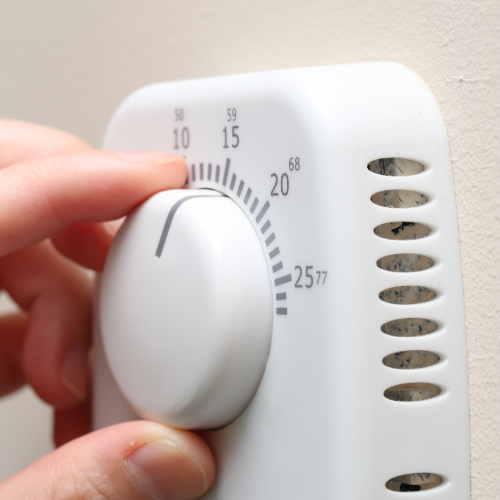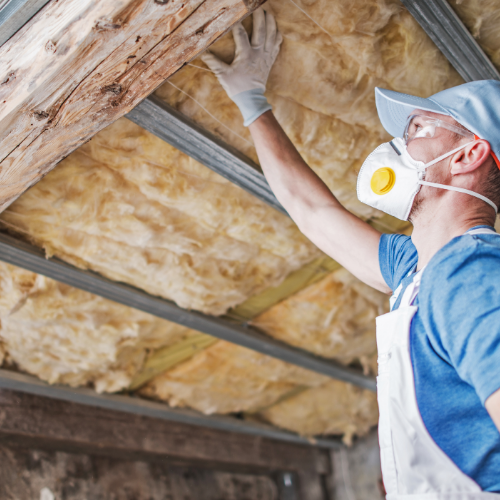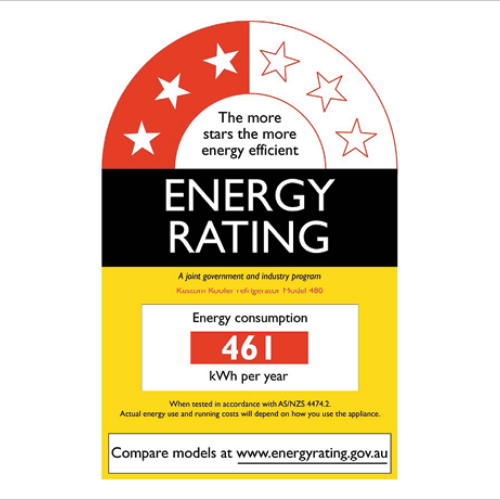EFFICIENCY AT HOME
We spend a lot of time at home. Which means, most of the ways we can reduce our carbon footprints and develop sustainable lifestyles are within our homes. Everyone has different living situations, whether you own or rent, live in a house, an apartment or on a farm. The following home efficiency suggestions are sure to help you achieve financial savings over time while helping the environment.
Read More
1. Update to Energy Efficient Appliances
We use our appliances every day. They endure wear and tear, and when your current appliances come to the end of their lives, upgrading to energy efficient models can decrease your electricity usage, and ultimately your carbon emissions. This included lightbulbs, dishwashers, heating, cooling, tv’s and laundry machines.
Home appliances use one-third of electricity expenditure in our homes. Newer appliances complete the same tasks using less energy and water. Thus, over time you will save money on your water and electric bills. The less energy and water used, the better for your wallet and the planet.
2. Insulation
Making sure your house or unit is prepared to retain the heating when it’s cold outside and staying cooler inside on a hot day is important to use energy efficiently. This reduces your greenhouse gas emissions as well as saving money. Insulation can be in ceilings and walls or double thickness glass windows which all slow down the transfer of heat in and out of the building. Checking the building for drafts around windows, doors, gaps in floorboards or walls are all ways the heat or cold can move in and out of the building making it hard to regulate temperature. Running excess heating or cooling costs a lot of money and in turn causes the release of more carbon emissions.
3. Heating and Cooling
Running heaters and air conditioners are some of the most energy intensive items in your home. Energy intensive means expensive to run and they in turn cause large levels of greenhouse gas emissions. Some simple and small behavioral changes that make a big difference to emissions is when it’s getting cold, wear warmer clothes so the heater can be dialed down a notch or 2. Conversely if your using AC set it a touch higher, don’t just put it on the lowest setting. Every 1 degree higher makes significant savings to your electricity bill and the flow on is less greenhouse gas emissions.
4. Solar Hot Water
Heating water using electricity or gas is the norm but there is has been continual movement to solar hot water systems.
Solar water heating systems collect sunlight and turn the sun’s energy into electricity, which can then be used to heat hot water. Solar water heating systems include storage tanks and solar collectors.
With solar hot water you immediately benefit from the cost savings, as the energy used to heat your water is now free.
5. Low Flow Water Fittings and Usage
Shower heads, taps and toilets can all be upgraded to low flow options. Low flow water fittings use less water, saving on your electricity and water bill, and ultimately, the planet. During drought conditions, these fixtures are especially essential. Drought conditions are expected to increase alongside climate change, and low flow water options are one of the best and easy ways to get immediate significant improvements. It is estimated that switching to low flow fittings can reduce household water consumption by up to 30% per year.
Monitoring water usage is a great way to become more involved in sustainability. Actions like only using the dishwasher when it is full, turning the tap off when brushing your teeth and shorter shower times. To put it into perspective, the average three person household uses 180 liters of water per person per day.
6. Carbon Offset Your Home
Using carbon offset calculators, you can use your recent electricity, gas and water bills to calculate the emissions released from your lifestyle. This knowledge confirms your emissions and gives you a starting point to work on ways to monitor and improve where you can. The calculator results will help you purchase the correct amount of carbon offsets based on your usage, and the funds will be used for greenhouse gas mitigation programs and projects.
Purchasing carbon credits for your household contributes to reducing carbon emissions and is a great option to reduce your household’s carbon footprint.
Read Less




Efficiency At Home




We spend a lot of time at home. Which means, most of the ways we can reduce our carbon footprints and develop sustainable lifestyles are within our homes. Everyone has different living situations, whether you own or rent, live in a house, an apartment or on a farm. The following home efficiency suggestions are sure to help you achieve financial savings over time while helping the environment.
Read More
1. Update to Energy Efficient Appliances
We use our appliances every day. They endure wear and tear, and when your current appliances come to the end of their lives, upgrading to energy efficient models can decrease your electricity usage, and ultimately your carbon emissions. This included lightbulbs, dishwashers, heating, cooling, tv’s and laundry machines.
Home appliances use one-third of electricity expenditure in our homes. Newer appliances complete the same tasks using less energy and water. Thus, over time you will save money on your water and electric bills. The less energy and water used, the better for your wallet and the planet.
2. Insulation
Making sure your house or unit is prepared to retain the heating when it’s cold outside and staying cooler inside on a hot day is important to use energy efficiently. This reduces your greenhouse gas emissions as well as saving money. Insulation can be in ceilings and walls or double thickness glass windows which all slow down the transfer of heat in and out of the building. Checking the building for drafts around windows, doors, gaps in floorboards or walls are all ways the heat or cold can move in and out of the building making it hard to regulate temperature. Running excess heating or cooling costs a lot of money and in turn causes the release of more carbon emissions.
3. Heating and Cooling
Running heaters and air conditioners are some of the most energy intensive items in your home. Energy intensive means expensive to run and they in turn cause large levels of greenhouse gas emissions. Some simple and small behavioral changes that make a big difference to emissions is when it’s getting cold, wear warmer clothes so the heater can be dialed down a notch or 2. Conversely if your using AC set it a touch higher, don’t just put it on the lowest setting. Every 1 degree higher makes significant savings to your electricity bill and the flow on is less greenhouse gas emissions.
4. Solar Hot Water
Heating water using electricity or gas is the norm but there is has been continual movement to solar hot water systems.
Solar water heating systems collect sunlight and turn the sun’s energy into electricity, which can then be used to heat hot water. Solar water heating systems include storage tanks and solar collectors.
With solar hot water you immediately benefit from the cost savings, as the energy used to heat your water is now free.
5. Low Flow Water Fittings and Usage
Shower heads, taps and toilets can all be upgraded to low flow options. Low flow water fittings use less water, saving on your electricity and water bill, and ultimately, the planet. During drought conditions, these fixtures are especially essential. Drought conditions are expected to increase alongside climate change, and low flow water options are one of the best and easy ways to get immediate significant improvements. It is estimated that switching to low flow fittings can reduce household water consumption by up to 30% per year.
Monitoring water usage is a great way to become more involved in sustainability. Actions like only using the dishwasher when it is full, turning the tap off when brushing your teeth and shorter shower times. To put it into perspective, the average three person household uses 180 liters of water per person per day.
6. Carbon Offset Your Home
Using carbon offset calculators, you can use your recent electricity, gas and water bills to calculate the emissions released from your lifestyle. This knowledge confirms your emissions and gives you a starting point to work on ways to monitor and improve where you can. The calculator results will help you purchase the correct amount of carbon offsets based on your usage, and the funds will be used for greenhouse gas mitigation programs and projects.
Purchasing carbon credits for your household contributes to reducing carbon emissions and is a great option to reduce your household’s carbon footprint.
Read Less
Efficiency At Home
We spend a lot of time at home. Which means, most of the ways we can reduce our carbon footprints and develop sustainable lifestyles are within our homes. Everyone has different living situations, whether you own or rent, live in a house, an apartment or on a farm. The following home efficiency suggestions are sure to help you achieve financial savings over time while helping the environment.
Read More
1. Update to Energy Efficient Appliances
We use our appliances every day. They endure wear and tear, and when your current appliances come to the end of their lives, upgrading to energy efficient models can decrease your electricity usage, and ultimately your carbon emissions. This included lightbulbs, dishwashers, heating, cooling, tv’s and laundry machines.
Home appliances use one-third of electricity expenditure in our homes. Newer appliances complete the same tasks using less energy and water. Thus, over time you will save money on your water and electric bills. The less energy and water used, the better for your wallet and the planet.
2. Insulation
Making sure your house or unit is prepared to retain the heating when it’s cold outside and staying cooler inside on a hot day is important to use energy efficiently. This reduces your greenhouse gas emissions as well as saving money. Insulation can be in ceilings and walls or double thickness glass windows which all slow down the transfer of heat in and out of the building. Checking the building for drafts around windows, doors, gaps in floorboards or walls are all ways the heat or cold can move in and out of the building making it hard to regulate temperature. Running excess heating or cooling costs a lot of money and in turn causes the release of more carbon emissions.
3. Heating and Cooling
Running heaters and air conditioners are some of the most energy intensive items in your home. Energy intensive means expensive to run and they in turn cause large levels of greenhouse gas emissions. Some simple and small behavioral changes that make a big difference to emissions is when it’s getting cold, wear warmer clothes so the heater can be dialed down a notch or 2. Conversely if your using AC set it a touch higher, don’t just put it on the lowest setting. Every 1 degree higher makes significant savings to your electricity bill and the flow on is less greenhouse gas emissions.
4. Solar Hot Water
Heating water using electricity or gas is the norm but there is has been continual movement to solar hot water systems.
Solar water heating systems collect sunlight and turn the sun’s energy into electricity, which can then be used to heat hot water. Solar water heating systems include storage tanks and solar collectors.
With solar hot water you immediately benefit from the cost savings, as the energy used to heat your water is now free.
5. Low Flow Water Fittings and Usage
Shower heads, taps and toilets can all be upgraded to low flow options. Low flow water fittings use less water, saving on your electricity and water bill, and ultimately, the planet. During drought conditions, these fixtures are especially essential. Drought conditions are expected to increase alongside climate change, and low flow water options are one of the best and easy ways to get immediate significant improvements. It is estimated that switching to low flow fittings can reduce household water consumption by up to 30% per year.
Monitoring water usage is a great way to become more involved in sustainability. Actions like only using the dishwasher when it is full, turning the tap off when brushing your teeth and shorter shower times. To put it into perspective, the average three person household uses 180 liters of water per person per day.
6. Carbon Offset Your Home
Using carbon offset calculators, you can use your recent electricity, gas and water bills to calculate the emissions released from your lifestyle. This knowledge confirms your emissions and gives you a starting point to work on ways to monitor and improve where you can. The calculator results will help you purchase the correct amount of carbon offsets based on your usage, and the funds will be used for greenhouse gas mitigation programs and projects.
Purchasing carbon credits for your household contributes to reducing carbon emissions and is a great option to reduce your household’s carbon footprint.
Read Less





Carbon Offset Advisory acknowledges the traditional owners and custodians of country throughout Australia and acknowledges their continuing connection to land, water and community.
We pay our respects to the people, the cultures and the elders past, present and emerging.

